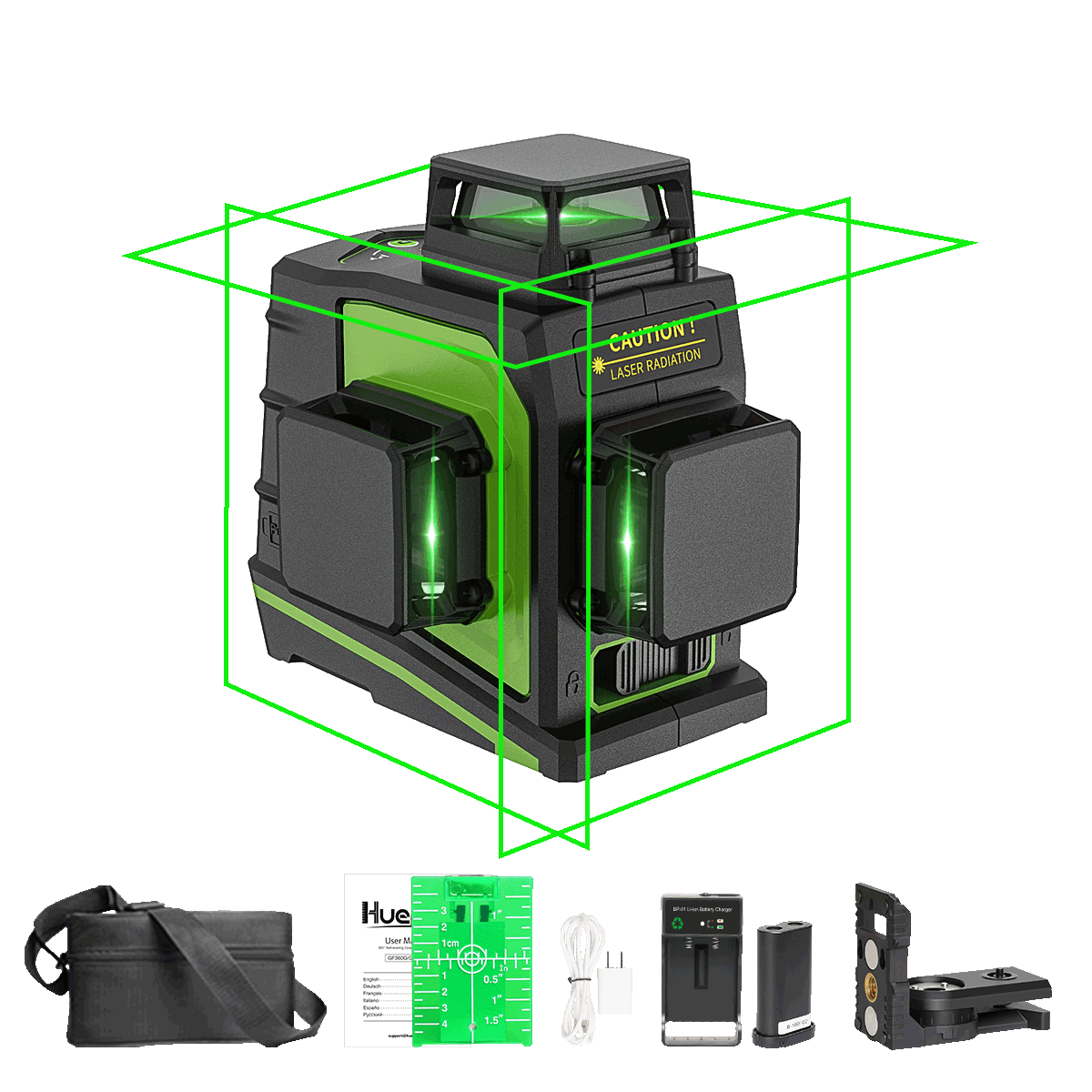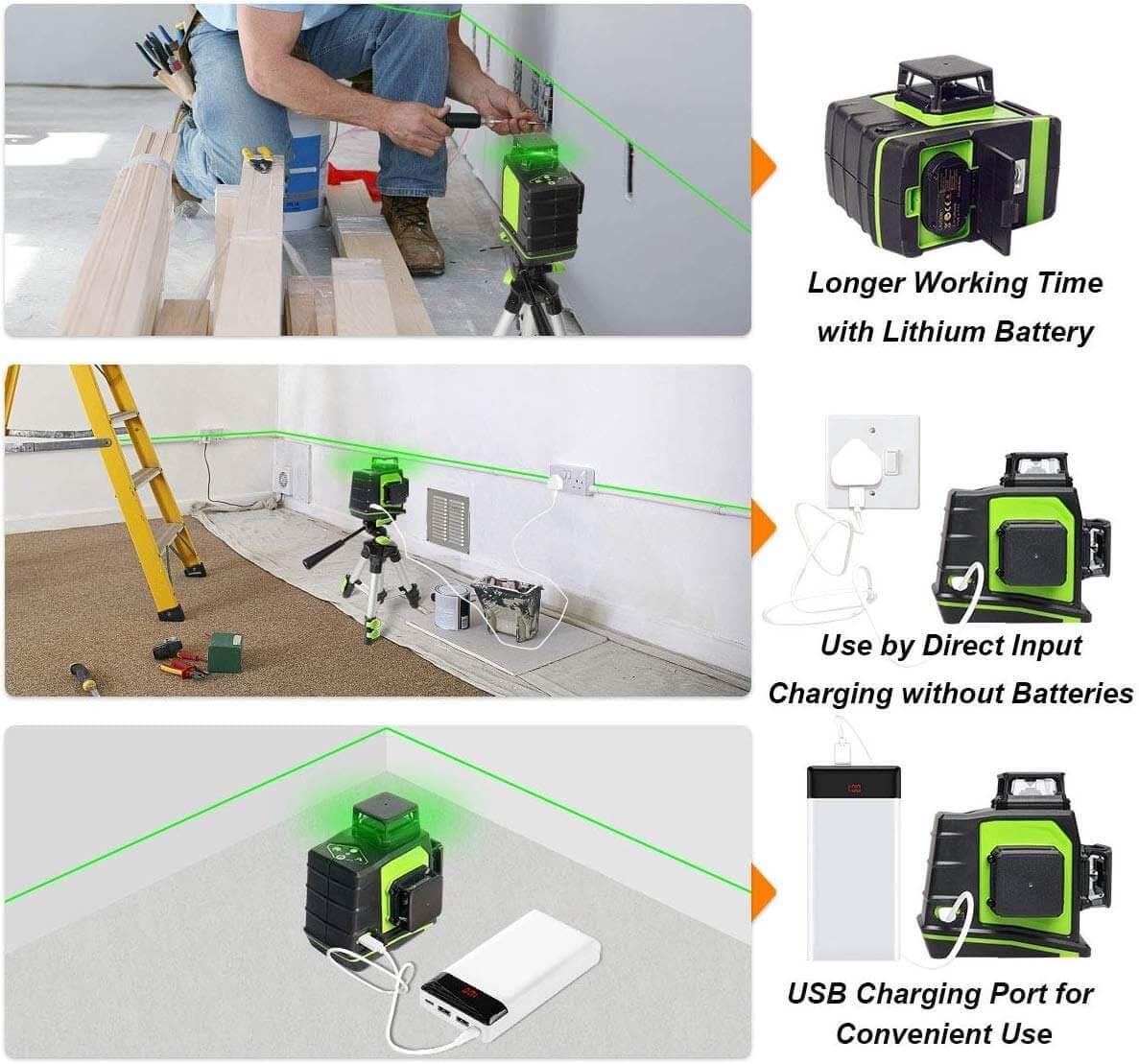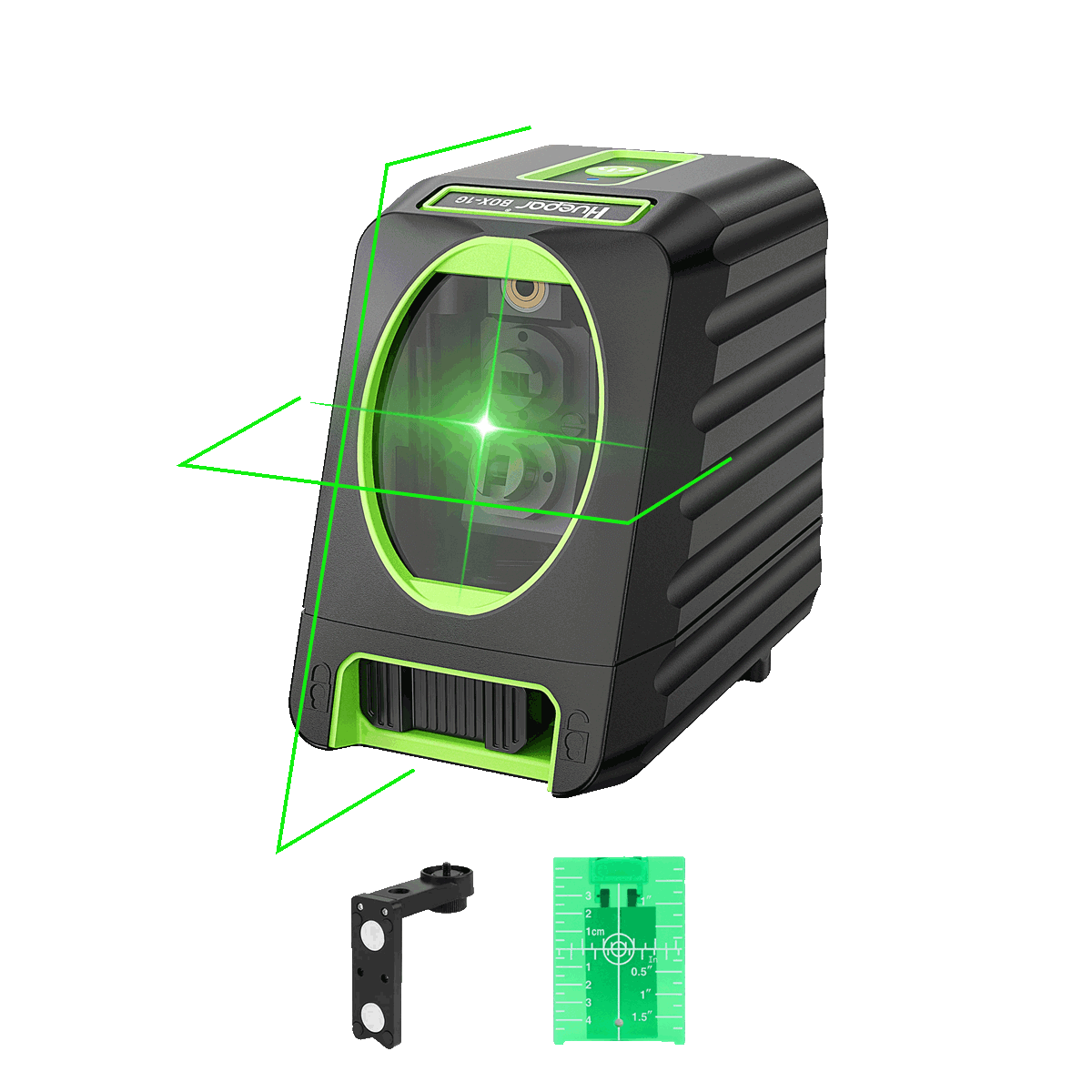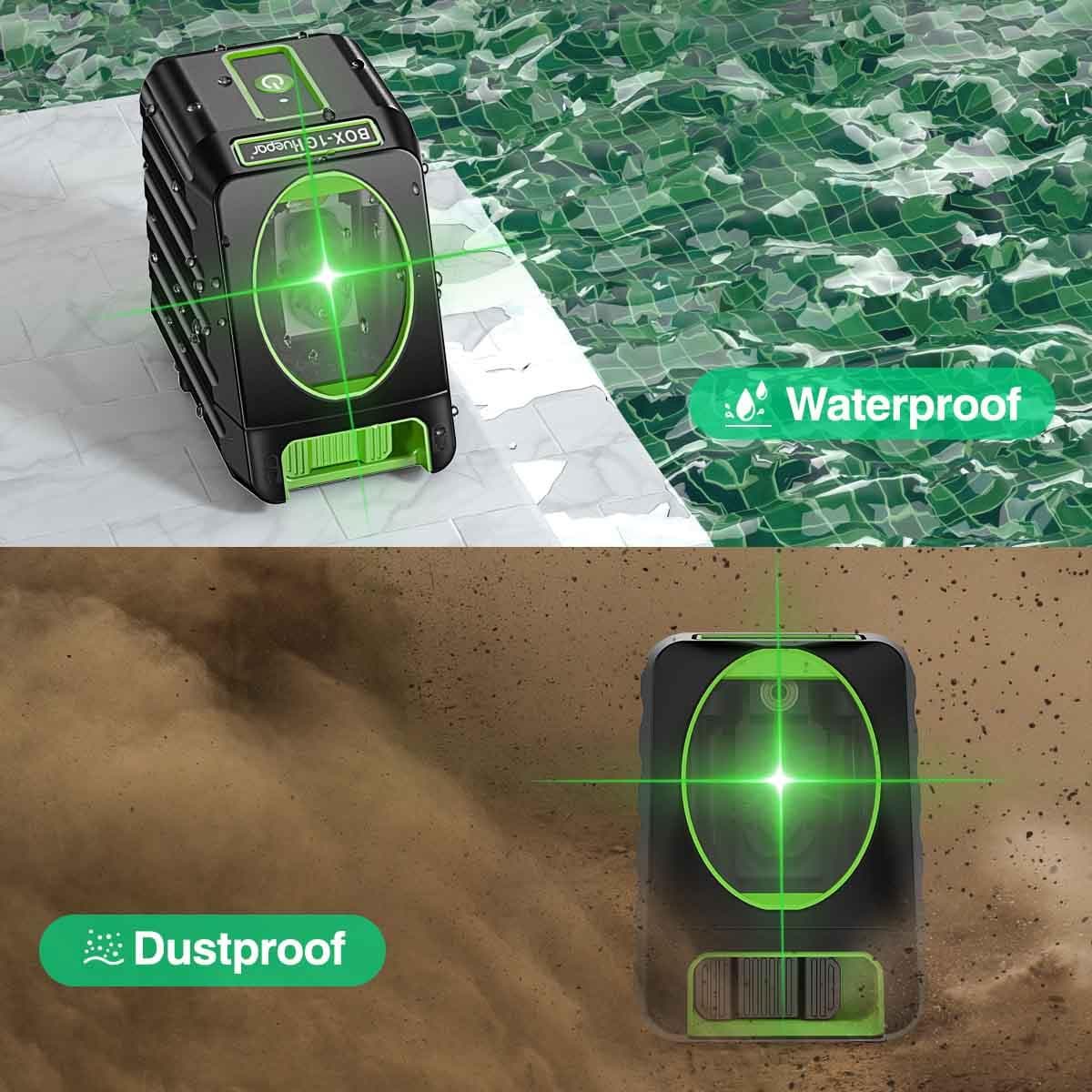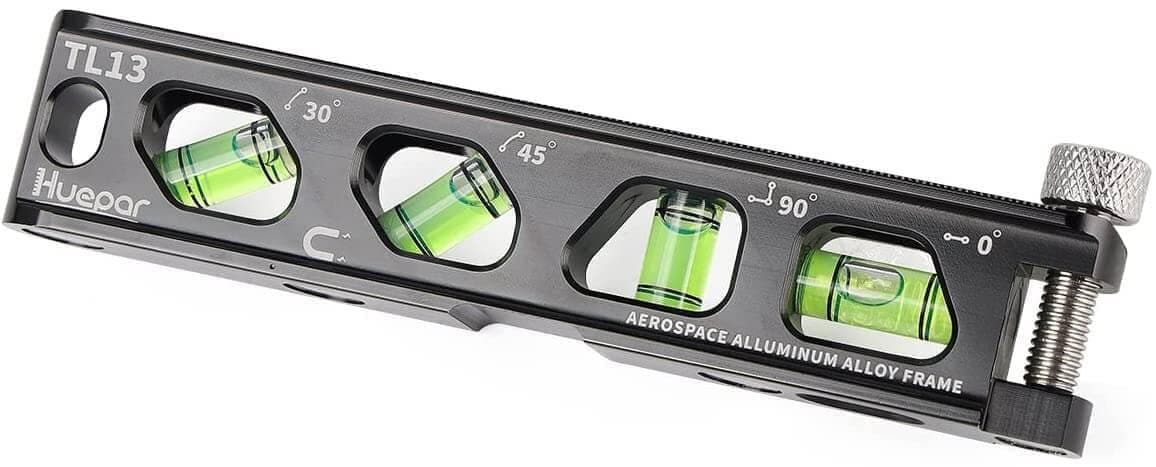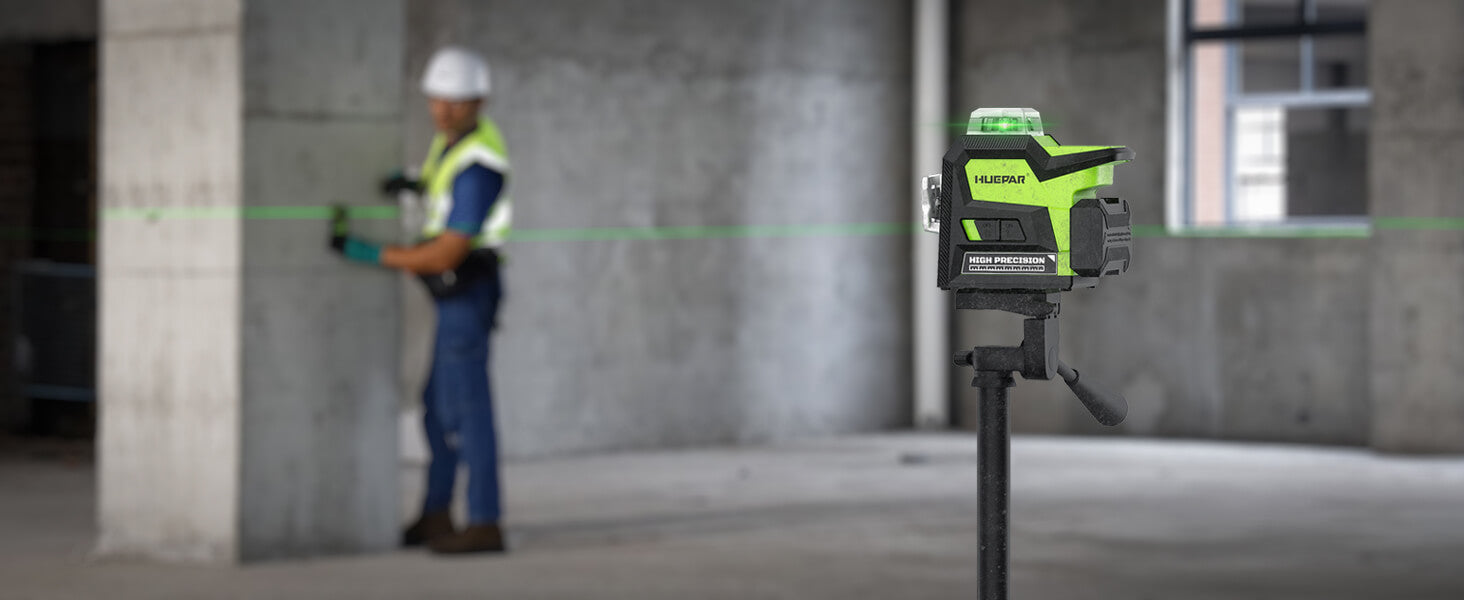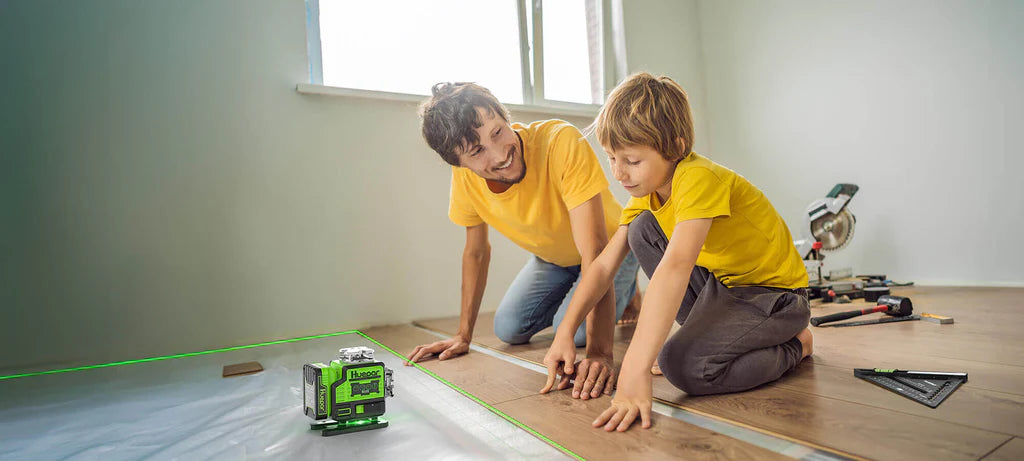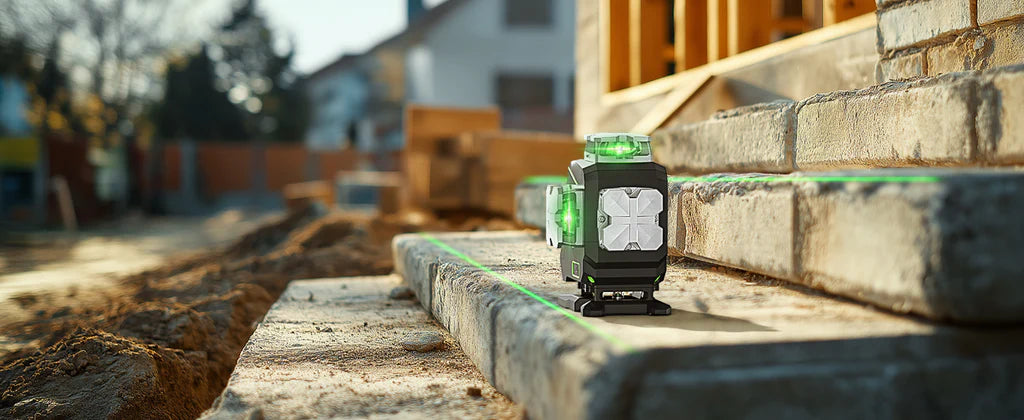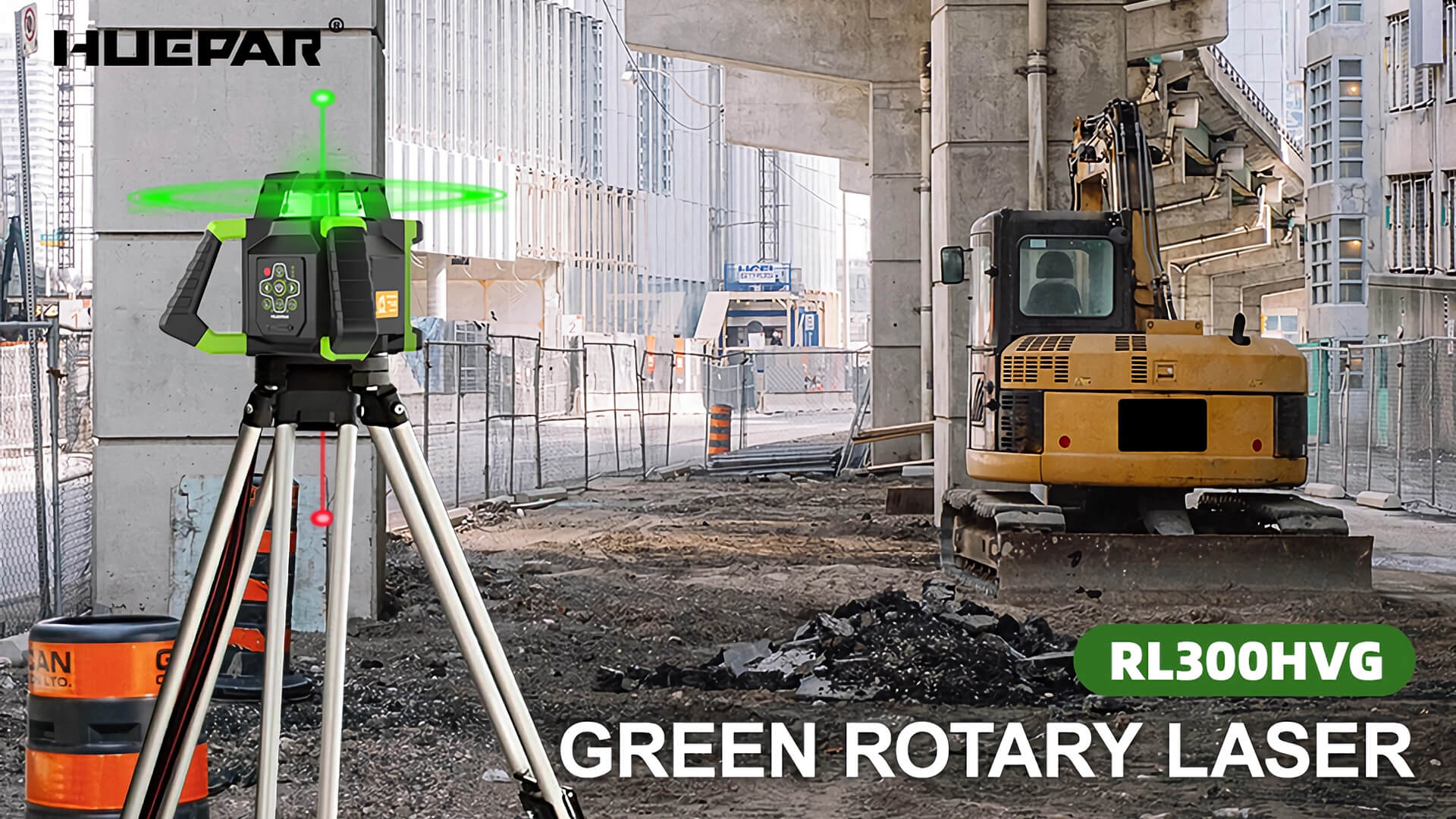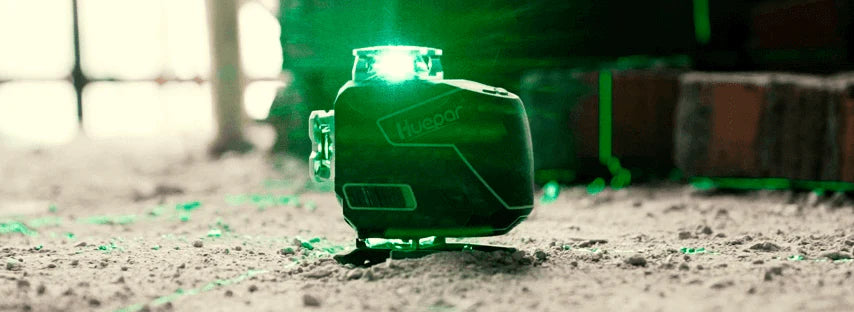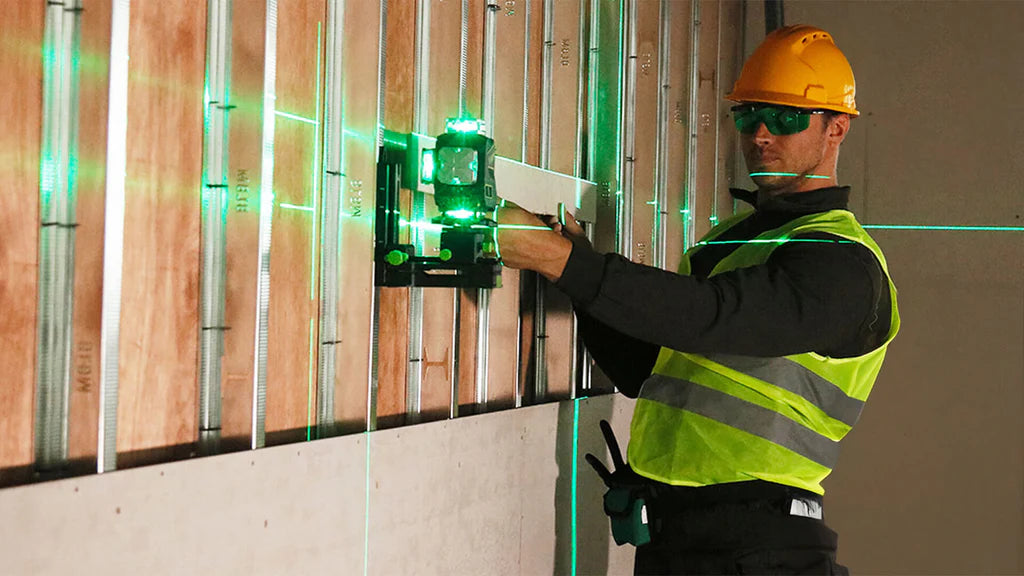
Red vs. Green Laser Levels - Which One is Better for You?
Having the capability to project level lines over long distances in various orientations, such as horizontal, vertical, or angled, laser levels indeed changed professionals' ways of performing tasks at hand by substantially improving efficiency and productivity while guaranteeing much greater accuracy than was possible with conventional methods.
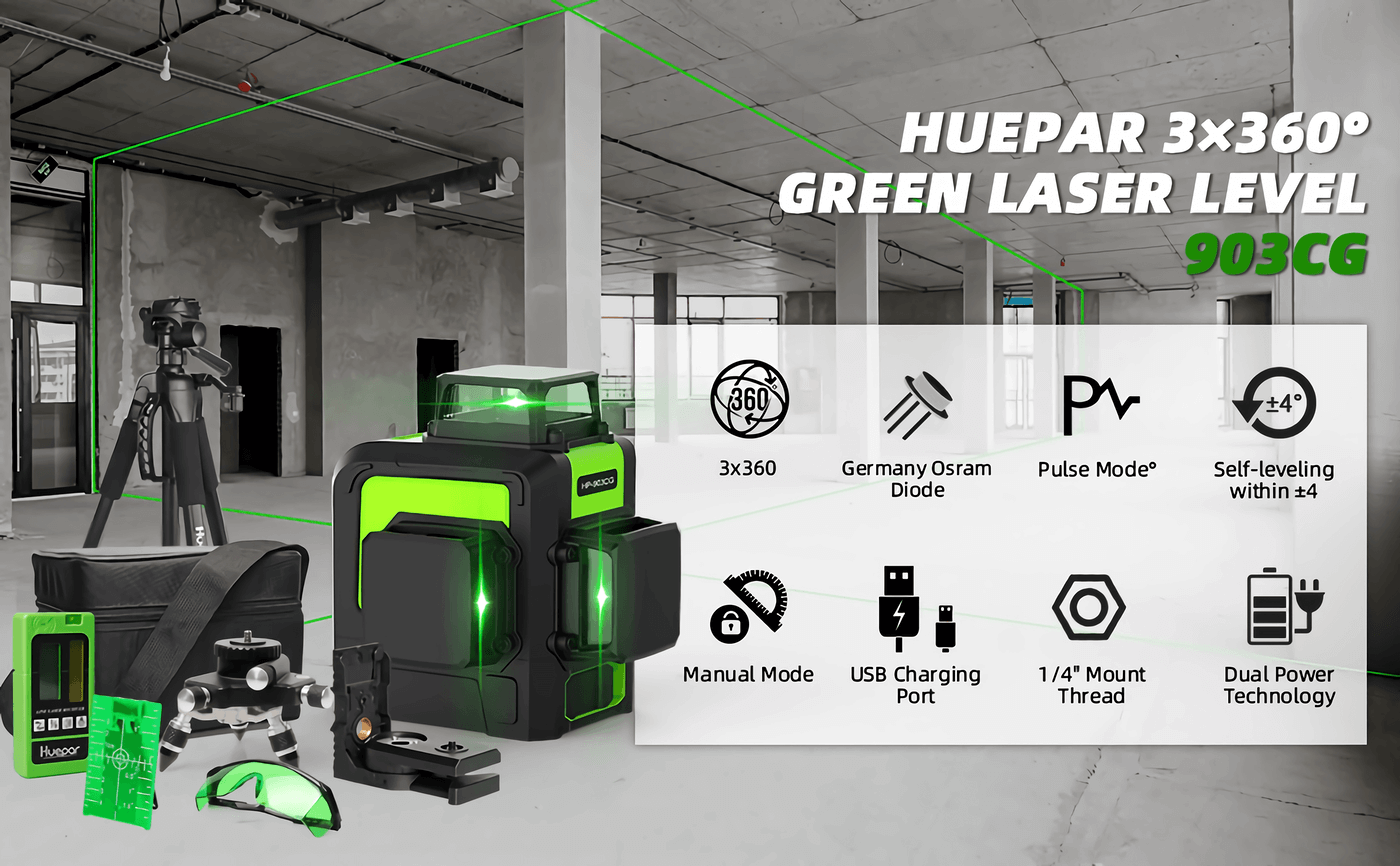
Laser levels have become an essential tool for construction and surveying professionals who need to make precise measurements over long distances. For many, the question is trying to determine what really sets red apart from green in laser technology. This post will outline the varying characteristics of both red and green lasers so you can make an informed decision based upon your specific needs and budget.
Red Lasers: The Traditional Choice
Because they are cheap and reliable, red lasers have always remained the choice for construction professionals and DYI alike. The cost factor is one of the major selling points of red lasers, hence making it more within budget for individuals and companies on a tighter budget.
Another prominent feature of red lasers is that they boast excellent battery life. The lasers use relatively low power to keep them running, which ensures longer runtimes from one charge or set of batteries. This translates to no downed work time and less downtown for the replacement or recharging of batteries.
While difficult to see in bright and sunny outdoors or over very long distances, the red laser works just fine indoors or in low light. The beams are highly focused and easily spotted, hence efficient for interior construction, remodeling, and installation projects when visibility would not be interfered with by bright sunlight.
Another strength of red lasers is their compatibility. Most laser receivers in the market are designed to work with red laser beams; thus, bringing about total accuracy when it comes to detection and alignment of things during your projects. It is this compatibility that provides you with the opportunity for a smooth flow in your workflow without needing to use special equipment.
However, red lasers have certain limitations regarding visibility in bright outside conditions or at a distance. In those conditions, the laser beam may be barely readable and may appear as thin or become vague; thus, it will affect the accuracy and productivity.
Green Lasers: The Bright New Wave
Among all those changes, the Green Laser Level perhaps stands out as one of the most revolutionary changes to have taken place so far in the industries of construction and surveyor. Unlike other red lasers, green lasers are much brighter in light and therefore more visible, hence more appropriate to be used outdoors or under daylight conditions.
The most major advantages of a green laser are that it can be fantastically bright, even up to 50 times brighter than usual conventional red lasers. This increased luminosity means the laser beam will still be hugely visible even under direct sunlight or over quite long distances. Whether you work on a construction site or survey a huge open area, green lasers provide unparalleled clarity and precision.
Advanced components and the latest technology go into making the visibility of green lasers exceptionally good. Operating at a wavelength more easily perceived by the human eye, these lasers are sharper and more vibrant in beam. Of course, this technological advancement comes with increased costs, but for a professional looking to get the most accurate and efficient work, an investment worth making.
However, in return, green lasers are much brighter and include more complex components compared to red lasers, which increase power consumption, hence reducing battery life. While this may become a factor to consider for users, many manufacturers have integrated energy-saving features, and some have even managed to extend battery life to balance the previous issue.
Green lasers epitomize the latest development in laser levels, unparalleled in visibility and top performance, even in the most inclement outdoor conditions. While the price may be higher, the value of their capability makes them invaluable for the professional in search of precision, efficiency, and reliability.

Red vs Green Lasers: A Comprehensive Comparison
The question is serious because, with laser levels, either red or green can make or break your project. Both have different strengths and weaknesses; thus, understanding the difference between them first for application, budget, and visibility of the laser and project demands becomes imperative.
Red lasers have been the industrial standard for quite a long period of time, merging performance with efficiency. They tend to work rather well indoors, where their lower brightness can support visibility. Additionally, red lasers have longer battery life because of the efficacy of power usage, which makes them efficient in prolonged working sessions.
On the other hand, green lasers are the new entrants within the laser level market; they do seem, however, to have earned some following rather quickly because of their remarkable brightness. These lasers are designed to work in numerous light conditions, including direct sunlight and over larger distances. Their better visibility makes them perfectly suitable for projects outdoors, such as surveying, construction, and landscaping.
The budget range is different since the fact is that red lasers tend to be cheaper when contrasted with green lasers. Such cost disparity evidences the high-value components and technology necessary for producing brighter green laser beams. However, if visibility and the delivering of the best results is a matter of utmost importance for a professional, then he may find it really worth investing more money in purchasing a green laser level.
Other critical factors in consideration will be the visibility requirements. As good as red lasers might not turn out in bright outside conditions, where their beam might be very hard to detect, green lasers excel under those conditions and can even go ahead to boast unparalleled visibility in sunlight. That added advantage might go miles to boost productivity and accuracy on projects outdoors.
The decision about which color of laser level is most suitable for the work you do remains with you. You might go great with a red laser level for very simple indoor projects or even general construction on a tight budget. However, if you happen to work more outdoors or need to see the laser line exceptionally well at long distances, then it will be worth investing in a good-quality green laser level that may become your business game-changer.
Red Laser Level or Green Laser Level: Making the Right Choice for Your Needs
Basically, in the process of choosing the right type of laser level to suit one's needs, there are several key factors that necessarily play an important role. Major decisions about the type of laser chosen between red and green depend on specific work requirements, budget constraints, and long-term goals.
Basically, evaluate the primary environment in which you'll be using the laser level. If you work mainly indoors or in low-light conditions, a red laser is often the cheaper, more pragmatic choice. On the contrary, if your work requires working outdoors or in brightly lit areas, a green laser can make all the difference in visibility and productivity.
Consider what length the typical visibility range would be for projects. Green lasers work best over a long distance and with bright conditions in view, such as on major construction sites, surveying, or outdoor installations. This might not quite work as well with red lasers.
Another important consideration is that of battery life and power consumption. Generally, red lasers boast longer battery life because they require less power, which could also extend operation time on job sites where access to power may be remote. Green lasers, however, might require more power, but if the purpose is maximum visibility, then it could be a worthy trade-off.
Cost and budget constraints also come into play in this decision. Green lasers tend to be more expensive due to the components and technology involved. If you are on a tight budget, a red laser would actually be better since it is practical enough, particularly for smaller projects or indoor use.
Additionally, consider the compatibility of your laser level with the current or future use of laser receivers. Most of them work with red and green lasers; anyway, it would not hurt to check that compatibility does exist before making a purchase.
Finally, consider future-proofing of your investment. For years, red lasers were the standard in this industry, but green lasers are fast becoming popular and may be the standard in the years to come in specific industries or applications. In case you will need to upgrade or expand your laser level capabilities in some years to come, then investing in a green laser might be a wise long-term decision.
In the end, there is no one-size-fits-all solution. Carefully weigh project needs, work environments, and budgetary constraints when you make your decision between a red and green laser level.
Top Laser Level Recommendations
When it comes to choosing the best laser level for your needs, there are several top models from reputable brands that stand out. Here are some of the most highly recommended options for green lasers:
Green Laser Levels
Huepar S04CG Green Laser Level
Huepar S04CG is a top-of-the-line green laser level that delivers exceptional visibility, even in bright outdoor conditions. Its powerful green beam can be seen up to 197ft range with Pulse Mode, making it ideal for outdoor construction, landscaping, and surveying projects. This laser level also features a rugged design and a rechargeable battery for extended use.
Huepar 603CG Green Laser Level
The Huepar 603CG is a compact and versatile green laser level that is perfect for both indoor and outdoor applications. Its bright green beam is visible up to 200Ft in brighter working conditions when using with Huepar Line Laser Receiver. This laser level also offers a range of mounting options, including a magnetic bracket and a tripod mount, making it highly adaptable to different job sites.
As a Global Brand, Huepar offers a range of features and capabilities to suit various applications and budgets. Whether you need a reliable red laser for indoor use or a powerful green laser for outdoor projects, these models are sure to deliver accurate and consistent results.
Professional Use Cases and Case Studies
Construction Professionals and Green Lasers
For construction workers operating on big outdoor job sites, green laser levels have become an invaluable tool. Increased brightness and visibility from long distances in view enable the workers to lay foundations accurately, level structural elements, and give appropriate alignments-even under direct sunlight. Experienced masons and carpenters alike speak highly of the clarity and precision of green lasers, which enable them to do more in a shorter time with increased confidence.
Interior Designers and Red Lasers
For indoor projects, such as kitchen and bathroom renovations or office fitting, many interior designers swear by the reliability of red laser levels. They are more practical for lower costs and longer battery life in tasks that require aligning cabinets, leveling floors, and hanging artwork or shelving. The brightness of the red beam is not quite as good as that of the green one, but it is easily visible indoors and in low-light conditions.
Surveyors and the Need for Versatility
Surveyors may be confronted with various environments, from open fields to dense urban areas. Most professionals in this line prefer laser levels that have both red and green beam options. This allows the surveyor to easily switch between both depending on the weather, where green will be used for outdoors and red will work indoor or in low light situations. Having both options gives one the correct tool for the operation at hand and ensures efficiency and accuracy.
Conclusion
The selection of the appropriate laser level for any given purpose is quintessential in realizing accuracy and efficiency in construction, surveying, among other disciplines. From the discussions previously engagement, it was highlighted that each of these, the red and green lasers, has distinct characteristics indicating strengths, weaknesses, and their applications in varied scenarios. Ultimately, a choice between either the red laser or the green will depend on your full awareness of needs and budgetary constraints regarding the nature of the projects to be done. You can make a choice with effectiveness in facilitating ease at work and raising your output by taking into consideration factors such as indoor and outdoor use, the visibility needed, and expectations of battery life.


